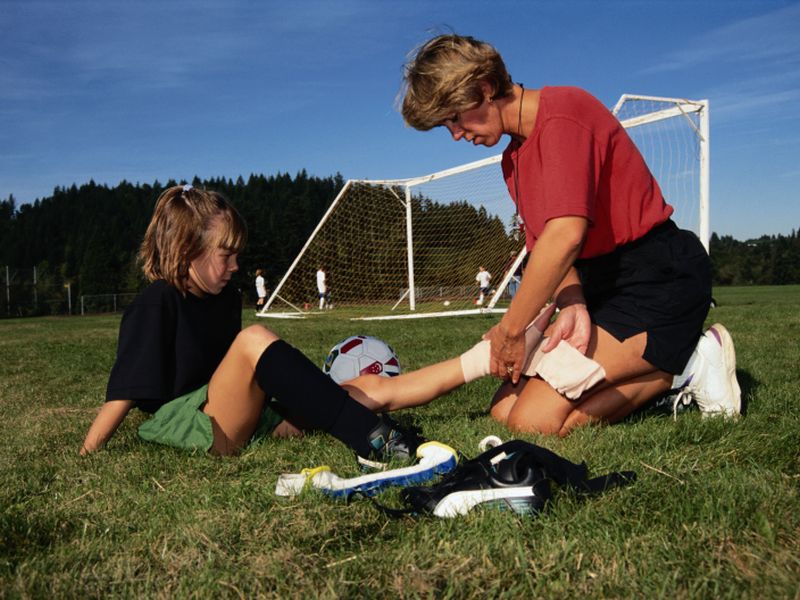

Pediatricians Offer Heads-Up for Preventing Soccer Injuries
Sprains and strains are common on the fieldSaturday, January 14, 2017

SATURDAY, Jan. 14, 2017 (HealthDay News) -- As children's soccer has become more popular in the United States, soccer-related injuries have also become more common, the American Academy of Pediatrics (AAP) says.
People can get hurt playing soccer if they collide with other players, the ground or a goalpost. Injuries can also occur while running, twisting, shooting and landing, the AAP explained.
Children who are injured while playing soccer most often sustain sprains and strains. Bruises are also common. These soccer-related injuries are usually minor and can be treated with basic first aid and up to a week of rest, the AAP advised.
The group cautioned, however, that more serious injuries may occur, including:
- Ankle and knee injuries: Boys sustain more ankle injuries, while knee injuries -- particularly anterior cruciate ligament (ACL) tears -- are more common among girls. These injuries can result from sudden stops or turns.
- Heel pain: This may occur due to irritation of the growth plate of the heel bone. This common injury can be treated with ice, anti-inflammatory medications, calf stretches and limited running. Children with heel pain may also benefit from wearing heel cups or arch supports.
- Head injuries: Concussions are a common soccer-related injury. Players can sustain a concussion after colliding with another player or hitting the ground. These injuries may or may not cause a player to lose consciousness. All concussions are serious injuries that temporarily affect brain function and require immediate medical attention.
- Mouth, face and teeth injuries: Soccer is a common cause of these injuries. Using a mouthguard can offer some protection.
- Eye injuries: These injuries are rare in soccer but they could cause damage to the eye globe or the eye socket. All soccer players should use protective glasses or goggles made with polycarbonate or a similar material that conforms to the standards of the American Society for Testing and Materials.
Soccer injuries could also be prevented by encouraging young people to play fairly and abide by the rules of the game, the AAP pointed out. The group adds that soccer-related injuries can also be avoided by taking the following steps:
- Wear cleats with sufficient heel and arch support and grip.
- Use soccer balls that are water-resistant, sized by age group, and properly inflated.
- Engage in preseason training to develop conditioning and balance.
- Encourage players to limit aggressive behavior.
- Ensure good field conditions, such as even playing surfaces without holes or irregularities.
- Secure goal posts to the ground at all times -- even when not in use. Follow installation guidelines from the manufacturer and the U.S. Consumer Product Safety Commission.
- Teach proper heading techniques at the appropriate ages and avoid excessive heading drills to reduce the risk of injury.
SOURCE: American Academy of Pediatrics, news release
HealthDay
Copyright (c) 2017 HealthDay. All rights reserved.
News stories are written and provided by HealthDay and do not reflect federal policy, the views of MedlinePlus, the National Library of Medicine, the National Institutes of Health, or the U.S. Department of Health and Human Services.
- More Health News on:
- Children's Health
- Sports Safety




























.png)











No hay comentarios:
Publicar un comentario